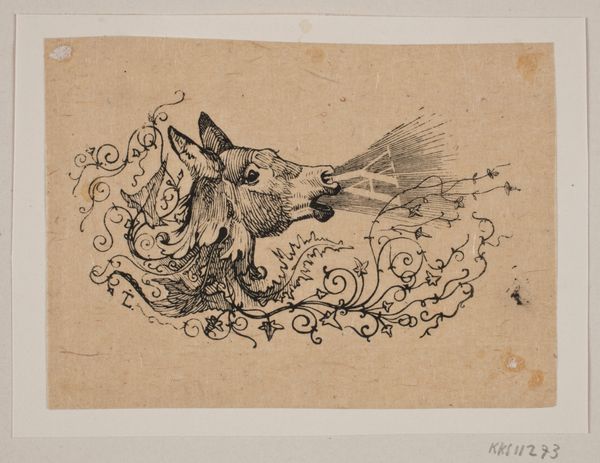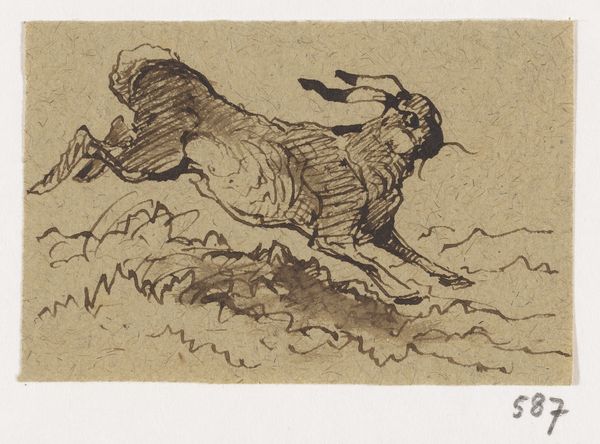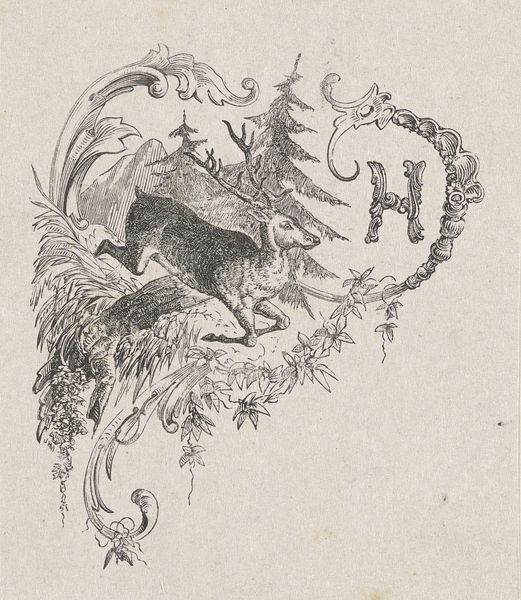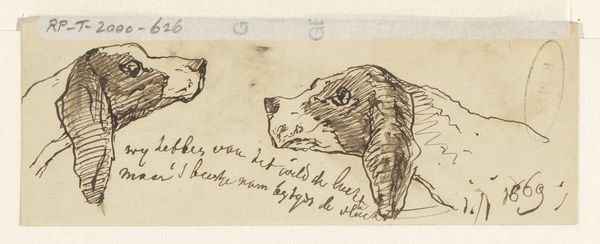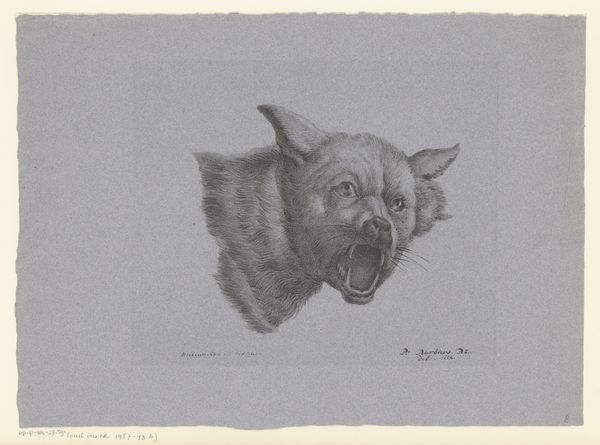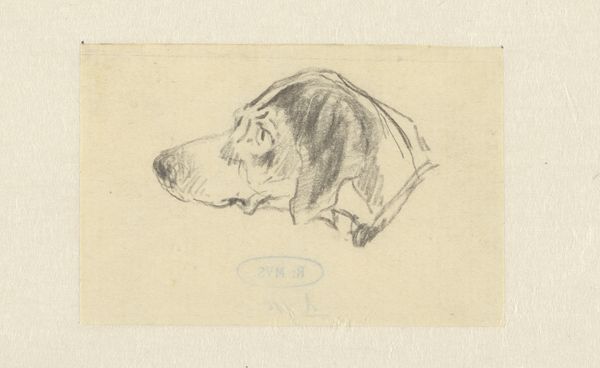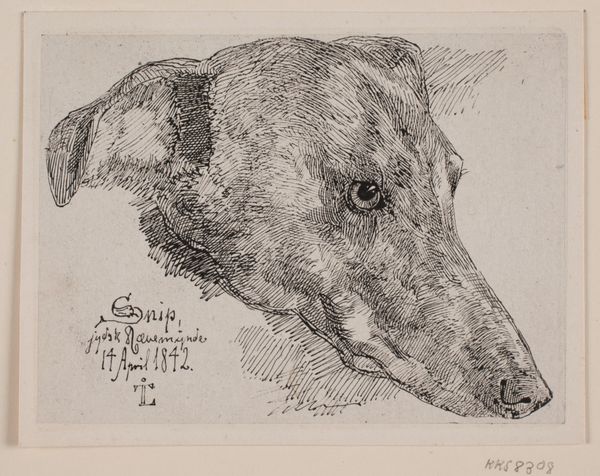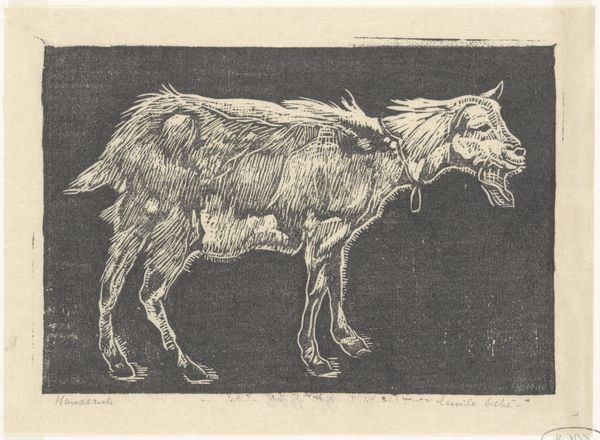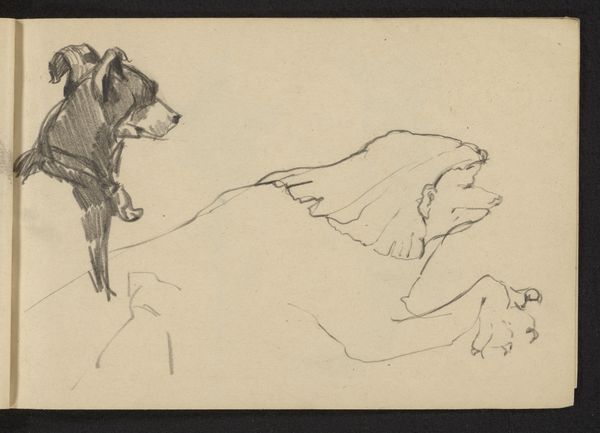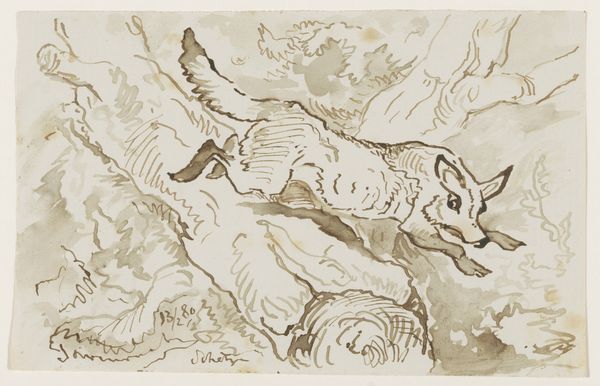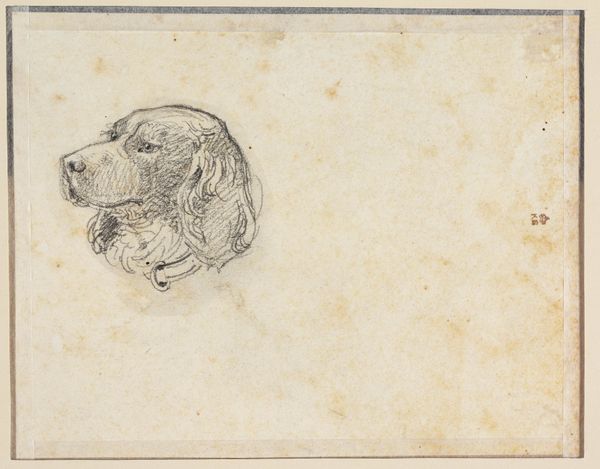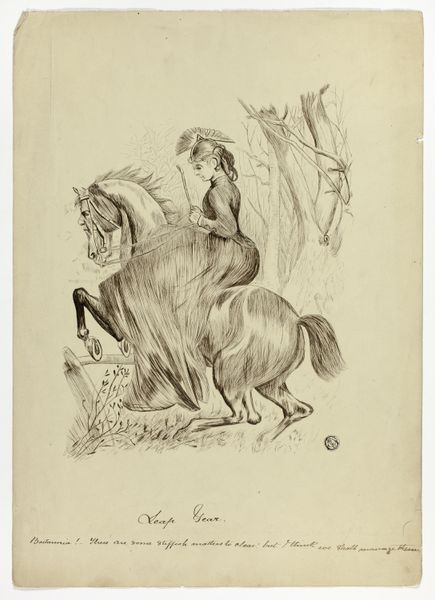
drawing, print, ink, woodcut
portrait
drawing
figuration
ink
woodcut
line
Dimensions 54 mm (height) x 96 mm (width) (bladmaal)
Curator: Right now, we’re looking at “Æslet udstøder Y-A,” a work from 1859 by Carl Peter Theodor Rothweiler, currently held here at the SMK. It’s a small piece, ink on woodcut, part of the line-style drawing tradition. Editor: Well, first thought? It feels…allegorical, but in a delightfully weird way. A donkey, mid-bray, seemingly expelling what looks like bolts of lightning that are also the letters "Y-A". And it’s framed by this elaborate, almost baroque swirling foliage. What am I even looking at? Curator: Given Rothweiler’s context, mid-19th century Denmark, this probably serves as some kind of social or political satire. The donkey, a traditional symbol of stubbornness and ignorance, literally expelling "Y-A"… we have to consider what those letters could signify. It could be initials, maybe representing an ideology being rejected. Or the opposite, something being forced to come into existance.. Editor: Right, the act of "udstøder" -- expelling. It’s forceful. And the “Y-A” is presented as these sharp, almost violent beams of light. The detail is amazing; you can see individual hairs on the donkey and then…these super defined, confident cuts of the woodblock describing "Y-A". Are donkeys traditionally symbolic in Danish art, as well as European traditions? Curator: The donkey appears throughout Western art, definitely tied to stubbornness, but also lower class identity. We should probably research Danish political figures whose name may have matched. The imagery of expulsion and the act of revealing in the artwork also strikes me; like uncovering what has been hiding. The choice of woodcut itself feels deliberate - a common person's print for disseminating radical social images and political messages to the world! Editor: That’s interesting—woodcut as the printing equivalent of punk rock, almost a DIY revolt. It fits perfectly with the visual anarchy of the piece. All the chaos centered on a poor screaming donkey! There is some deep discontent bubbling up there! Curator: Precisely. Looking closer at Rothweiler, we find recurring figures—notables, anonymous workers, a world in transition. "Æslet udstøder Y-A" is another instance where those anxieties bubble up, and is presented, to this day, in his distinct, line-based style. Editor: So, in a world full of digitally rendered perfection, there’s something grounding about seeing that imperfect human hand carve out rebellion with a block of wood and a furious donkey. It feels really relevant still! Curator: It is, yes. What resonates are those underlying cultural threads of discontent being manifested across visual symbols, no matter how esoteric they might appear at first glance.
Comments
No comments
Be the first to comment and join the conversation on the ultimate creative platform.
